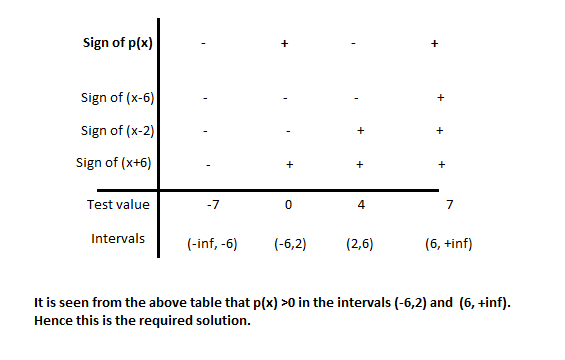Question #463b6
2 Answers
Explanation:
If you multiply the brackets you will get
graph{(x-6)(x-2)(x+6) [-20.24, 22.39, -5.94, 15.35]}
(-6,2) U (6,
Explanation:
Non-graphical method of solving these types of inequalities is given below:
Let p(x) denote (x+6)(x-2)(x-6). Divide the entire domain in four intervals


